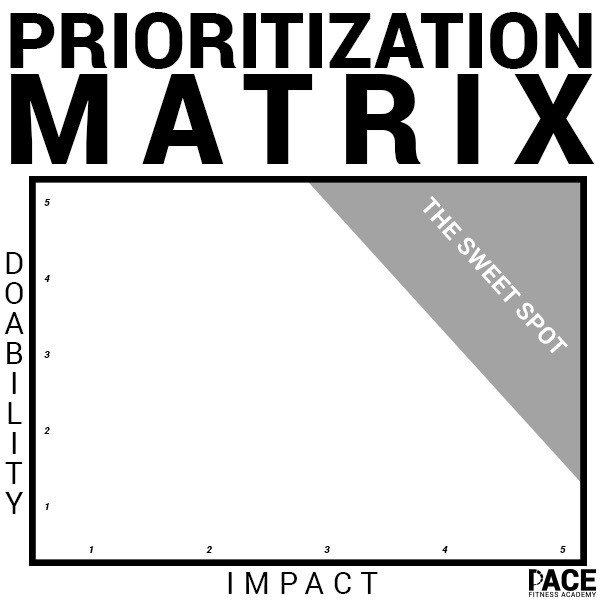|
When I was a 14-year-old mischievous young man walking the halls of one of the largest, most diverse high schools in the country, I indirectly learned one of the most beneficial lessons of my life. And it wasn't even in the classroom. In the hallways, huge banners displaying the seven habits of highly effective people hung from the rafters. For the unfamiliar, the seven habits were developed in a popular self-help book written by Dr. Stephen Covey and published in 1989. In identifying seven habits or lifestyle choices that highly successful people incorporate into their daily lives, the book aims to put readers on the path to achieving their goals. Habit number two has had the most long-lasting effect on my life: "Begin with the end in mind." I looked at that banner every day, applied it back then and still do today. Beginning with the end in mind is crucial to accomplishing any goal. In considering what you can gain from accomplishing your goal and using that to fuel your fire, you'll be better equipped to deal with the ups and downs of your journey to success. For life coaches, motivational speakers and entrepreneurial gurus today, this idea of "reverse engineering" has become a popular term used to inspire people working to set goals. A souped-up version of Covey's second habit, reverse engineering is an effective way to look at your vision in the macro and break it down into micro goals that set you up for success over time. Step 1: The Brain DumpThe biggest mistake people make when it comes to goal-setting is having several scattered, unrelated goals at the same time. How can we expect to be great at one thing if we're focusing on 10 other ideas at the same time? The first step in reverse engineering is finding out exactly what it is you want to accomplish. In order to do so, it's time to perform a brain dump to get your thoughts out and get them organized. Sit down with a pen and paper (literally) and spend 15 minutes writing down everything you've ever wanted to accomplish. Word vomit onto your piece of paper with no hesitation or thought process. Next, look at your list and rank each line item either a one, two or three. A one rating means it is not that important to you right now; a two means it is semi-important; and a three means it is extremely important to you at this moment in time. From there, write down any item you designated as a three on a clean sheet of paper. These are all the things that you deem to be extremely important for you and your future, so it is the most reasonable and exciting place to start. Look for similarities between two or more lines, working to combine them into larger or more specific goals. Step 2: The Prioritization MatrixOnce you have a list of 10 maximum items, it's time to decide which goals you need to make the priority. Again, you can't chase 10 things at once because you'll likely end up catching none of them. Consider the parameters of S.M.A.R.T. A prioritization matrix is another helpful tool that can help you figure out what you really want. Looking at your list, you need to give each line item a plot on your matrix. The X-axis of the graphic, or horizontal line, represents  If an item is hard to achieve and has a low impact on your life, you may want to reconsider it as a goal. If an item has a high impact and is pretty doable, you will probably want to focus more on that because of how much bang-for-your-buck you're getting by achieving this goal. High This exercise can help you weed out goals that, after further review, aren't going to impact your life in a major way. In the end, you'll have a clear picture of what it is that you truly want to accomplish, and you'll be able to articulate why it is so important to you. Step 3: Reverse EngineeringNow that you've removed goals that either aren't urgent, important or right for you at the moment, it's time to crush the goals that you've determined are going to positively impact your life. For this example, we'll be using a weight-loss goal to illustrate the reverse engineering strategy, but truly, this strategy can be used with any aspiration. Let's say you want to lose 100 pounds in 12 months. That's a big goal. Losing 100 pounds is a macro goal. In the macro view, it's one definitive goal; in a micro view, it must be broken down into bite-sized pieces that lead up to the end goal. With the end in mind, begin by making short-term achievable goals such as I want to drink water instead of soda for one month straight. Or, I want to perform 30 minutes of cardio exercise, four times a week for five weeks. A more specific example could be: I want to eat 2,000 calories a day, including 140 grams of protein, 200 grams of carbs and 50 grams of fat per day. Or, I want to lose 10 pounds this month, which is an easier number to handle than 100 and, if you stick with it over the course of 12 months, will lead you to exceed your end goal. Overachievement isn't the worst thing. These goals won't get you to your end goal alone, but they will help you create momentum, sustainable habits and lifestyle changes that can lead to the ultimate goal. They'll also keep your mind from feeling overwhelmed by the big picture as it focuses on just accomplishing small victories here and there. Then, the next set of goals can elevate expectations or build on top of the previous micro goals. As you start to check these micro-goals off the list, you'll simultaneously be working toward the major goal of losing 100 pounds. The more goals you check off the list, the more confidence you gain, momentum starts to build and, ultimately, you slowly become a fine-tuned machine, fixed on autopilot and headed straight to your final destination. Step 4: The JourneyThis is step four, but it will be ongoing throughout steps one through three. This is the journey. The journey is full of ups and downs, plateaus and peaks, failures and successes. Remember, that the hardest things in life are usually the most worth going after. Step one is challenging because you have to open up about yourself, which some find difficult to do. Step two is even tougher because you're forced to be honest with yourself about what is important, realistic and timely. Once you embark upon step three, you will likely encounter unexpected bumps along the way that you will overcome. Each step will have its challenges and plateaus, but step four serves as a reminder that the journey is truly where the value lies. The destination is great, but what you learn about yourself and what you're capable of over the course of a long journey is truly special and irreplaceable. The reason we begin with the end in mind is to keep the vision clear and laser-focused on what you want for yourself. You ruled out plenty of other options yourself in steps one and two, so there is no backing out during steps three and four. If you keep this in mind along the way, you'll always fall forward when you get tripped up. Use these four steps to reverse engineer all your major goals in life and you'll have a complete mental clarity on what you want and exactly how to go get it. |






